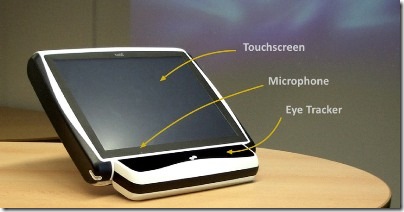EBooks has revolutionized the book industry in a way no one would have thought of. So much so that companies like Amazon came up with Kindle for e-books and then Apple joined the competition to provide best electronic book reading experience by launching iBooks for iPad.
If that was not enough, here comes a technology that will take reading to a new level. Welcome Text 2.0- a technology that will provide life to written word.
What is Text 2.0?
Text 2.0 is a reading enhancement technology which is being developed by a collaboration of German Research Center for Artificial Intelligence and a Swedish firm Tobii Technology. With the help of this technology, words will be able to find where on the page you are looking at, whether you are facing any problem understanding a word or if you are just skimming instead of reading the whole page. Based on this information, the e-reader will react accordingly. For instance if a reader is skimming through the pages, non-essential information gets faded; if he reaches a certain word its meaning pops up and if he glances away while reading, a bookmark appears where he left reading.
Image Credit: Text 2.0
How does Text 2.0 work?
To understand the working of Text 2.0 in a simple way, we can divide it in three steps:
- Track reflection from an infrared source in the eyeball with a camera.
- Analyze the information collected by eye tracker.
- Trigger certain actions based on the analysis, using HTML, CSS and JavaScript.
For example, reading a certain paragraph can start showing related images, encountering a difficult word can display its definition and so on.
Though the technology is still in development stage, some videos have been released to show it in action. See one of such videos below:
When will Text 2.0 be available?
If you are wondering when you can see this technology in action, you’ll have to wait for some time. It is still in its nascent stage and there are many areas it needs to work upon. Some which I can think are:
- Cost: Cost is the chief deciding factor. Right now the eye tracker that is being used costs tens of thousands of dollars. However this can be reduced once it gets opened for the market, since then the R&D cost will be spread over widely.
- Accuracy: The eye tracker should be accurate enough to track the movement of a fast reader.
- Ads: While reading something online when we come across in-text link ads we decide whether to click on it or not. However, while using this technology, we’ll have no such control and ads might pop up when our eyes reaches the keyword.
- Nothing can be automated with 100% accuracy. For example how will it know which words are relevant to me when I’m skimming through a page?
However your wait might not last very long. Apple is known to have bought eye-trackers from Tobii Technologies. This might mean that Apple can use this technology in the next version of iPad, though no such official announcement has been made by Apple regarding this.
If the poll conducted by Mashable is something to go by, e-books have a long way to cover before they can overtake the real books in popularity. Will this technology make that difference and provide an edge to e-books over real books? Let us know through your comments.
Link: Text 2.0
